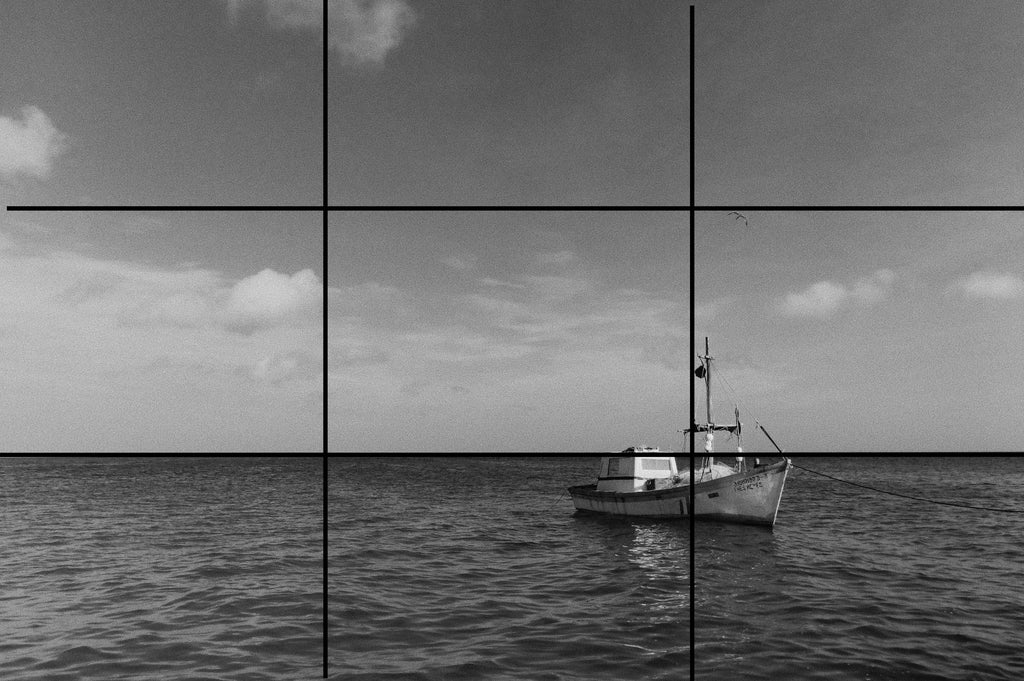Learning about photography and how to improve your photo skills can be a little challenging if you are a beginner. Where to start? Where to get the info? And so many more questions. Smartphones have made capturing professional-looking photos really easy. In fact, the newest phone cameras are almost comparable to some pro-level DSLR cameras.
You can learn photography by reading books, by taking online courses, and by researching the types of photography available out there to see what appeals best to you.
One aspect of photography that can make or break a photo is composition. Composition is the way the objects are seen in the photo, the way the photographer decides to display them in his frame.
Photography is much more than pointing your camera at a subject, placing it smack dab in the center, and pressing the shutter button. There are so many ways to make photos more interesting and unique.
Let’s take a look at some of the most commonly used composition techniques that you can start using immediately to bring your phone photos to another level.
Phone Photography Composition Techniques
Rule of Thirds
By far the most widely used and common photography composition technique. Why so popular? Because it works visually. By the way, it isn’t a “rule” per se, but a technique that helps the viewer’s eye move over a photo more harmoniously.
Separate your frame into 9 equal rectangles. Place your object on a line or an intersection of lines.

Useful Tip: Turn on the gridlines on your phone. You won’t have to imagine the lines and this will help you to place the objects perfectly in your composition.

Symmetry
Symmetry is another composition technique that is easy to achieve and is quite satisfying to look at.
Look for objects that are symmetrical and place a point of interest in the center to draw the eye straight into the photo. Oftentimes, symmetry works well with square photos.


Framing
Framing is when you surround or “frame” your subject with an object. It can be a window, a bridge, an arch, branches, or anything else that will frame your subject creatively.


Negative Space, Minimalism, Simplicity
Sometimes less is more. Place your subject at the far end of your composition and leave empty space in the rest of the photo. The empty space can be a solid color or a soft texture.
Negative space photography can evoke emotions of mysteriousness and calmness.


Leading Lines
Use leading lines to guide the eye of the viewer to what matters in your photo. It can be virtual lines or literal lines.
Streets, rivers, bridges, and other similar types of objects are obvious to obtain a leading line composition.
Also, look for elements that are gathered together that form a line, like the wind blowing in the grass or a set of clouds for example.


Actually, this photo is also an excellent example of the Negative Space composition technique.
Textures, Patterns, & Repetition
Adding textures or patterns in your composition can add dimension and make the photo much more interesting.

This photo was also taken from a unique perspective, which we will get into further in the article.

Using repetitive shapes and elements in a photo can create unique images and evoke calmness and balance.
Rule of Odds
Odd numbers tend to be more pleasing to the eye than even numbers. Use 3, 5, or 7 objects instead of 2, 4, or 6.
This is a basic rule in the design world and many visual artists use this composition technique also.


Perspective
People tend to stand, point, and shoot. Try different perspectives to get unique angles to create more interesting photos. Get down on the ground or stand up on a chair.

Foreground Interest
Add an element in the foreground of your frame to create some depth and layering. It can be anything from rocks to a book.

In this photo, the photographer could have framed the shot without including the small formation of rocks in the foreground and the photo would have been a good one. But by adding the rocks it creates an interesting layering effect and shows more depth in the photo.
Filling the Frame
The opposite of the negative space composition technique is filling the frame. This simply means that you completely fill your frame with your subject. You can move in close, use your zoom, or even crop the photo when editing it.


All About Color Combinations in Photography
Some colors simply look good together. Designers, painters, decorators, and everyone who works with color use the color wheel to apply the basic color theories.
We can use color as a composition technique when creating photos. It is widely known that blues and oranges together in a photo look great. That is because they are complementary colors.
Take a look at the color wheel below. The colors on the wheel that are opposing each other are complementary colors and tend to look good combined.

Time to Practice Your Photography Composition Techniques
Practice makes perfect, and that applies to photography as well. Of course, these are simple guidelines for helping you to compose your photos. You can combine several composition techniques if you wish or you can even create your own.
Take time to look around and think about what you are photographing.
Sometimes a little shift in your perspective can make your photo go from just ok to WOW! Practice several composition techniques until you find the ones that you enjoy the most doing.
Join our Facebook group Shoot Like a Pro with Your Phone to meet like-minded people and to share your photos with the community. Also, you will get useful advice and gain access to more tips and tricks to improve your phone photos.




